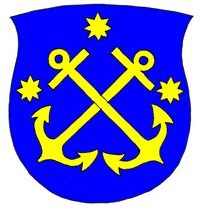Nicolas Katzer (Ketzer) (1486/7 – after 1550) was a German mathematician, astronomer and astrologer. He was also an instrument maker, and is thought to have collaborated with Hans Holbein the Younger (1497/8-1543), one of the most important artists of the XVI century, who included complex instruments in a number of his works. The miniature portrait (ca 1530) depicts Katzer with an armillary sphere; it is one of the earliest known English examples of miniature portraiture. The armillary sphere is a common object in depictions of astronomers; it has long been a symbol of learning. But unlike the instruments painted in Holbein’s portrait, the armillary sphere in the miniature is crudely drawn. This is often the case with portrayals of a complex instrument, but it is unusual given Katzer’s employment as an instrument maker and his probable involvement with Holbein’s other paintings featuring instruments. Again the identification of Katzer, or at least his involvement with the painting, comes into question.
Born in Munich, Katzer came to England between 1516 and 1518. He had studied at Cologne and Wittenberg. In England he established himself as part of the artistic and scientific circle around Sir Thomas More. Katzer tutored More’s children in mathematics and astronomy. He was also teaching at Oxford (probably in 1523-4). More introduced him at court in much the same way as he had their mutual friend Hans Holbein. In the same manner as Holbein, Katzer’s talents obtained him a court position as astronomer and clock maker to the King. Both Holbein and Katzer were employed at the court of King Henry VIII, and both brought their expertise – painting and instrument making respectively – to England from the Continent. Katzer also collaborated with Holbein on producing maps and the artist in turn produced a full-sized portrait of Katzer in 1528 which now hangs in the Louvre. It depicts the craftsman surrounded by the tools of his trade. His close relationship with Holbein and More can also be observed in his annotations of Holbein’s draft for his portrait of the More family. Katzer identifies the various family members (including Henry Patenson, More’s ‘fool’) and their ages for the benefit of More’s friend, the theologian Erasmus.
Katzer made many sundials and clocks for Henry VIII because at that time mathematical objects like sundials were very highly sought after. People who owned mathematical instruments used them to show that they were learned and cultured. This means that they wanted to show that they understood the new mathematical theories of the time and that they appreciated beautiful and complicated things. Nicholas Katzer in about 1533 made a sundial called a ‘polyhedral dial’ (made in a complicated shape) for Cardinal Wolsey. Cardinal Wolsey was one of Henry VIII’s archbishops before Henry divorced his first wife, Catherine of Aragon, and was excommunicated from the Catholic Church, following which the Church of England became Protestant. We know it was made for Cardinal Wolsey because it has his coat of arms engraved on it as well as two pictures of a cardinal’s hat. It can be used to tell the time in a number of different ways from the position of the sun. It is a very precious object and is completely covered in gold (Museum of the History of Science, Oxford).
